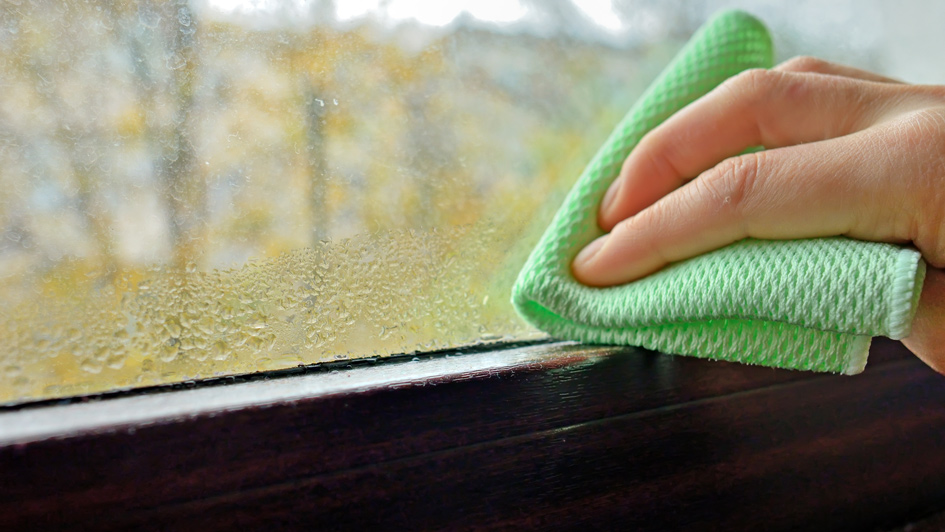
The windows in your home open up to the outdoors, a way to let light in as you appreciate the view of your garden, yard or scenery. The last thing you would want to see is a sweaty window covered in a coating of condensation.
Not only are windows covered in condensation unsightly, they also can be a symptom of a more substantial air-quality problem in your home. Thankfully, there’s multiple things you can attempt to resolve the problem.
What Creates Sweating in Windows
Condensation on the interior of windows is formed by the humid warm air in your home hitting the colder surface of the windows. It’s particularly commonplace over the winter when it’s much colder outside than it is in your home.
Inside Moisture vs. In Between Panes
When discussing condensation, it’s crucial to recognize the contrast between moisture on the inside of your windows versus moisture in between the windowpanes. One is an air-quality issue and the other is a window issue.
- Moisture within a window is created from the warm damp air in your home condensing on the glass.
- Existing moisture you find between windowpanes is produced when the window seal fails and moisture gets in between the two panes of glass, in which case the window should be repaired or replaced.
- Condensation in the windows isn’t a window issue and can instead be solved by fine-tuning the humidity across your home. Many things produce humidity throughout a home, like showers, cooking, taking a bath or even breathing.
Why Condensation on Windows Could Mean Trouble
Though you might consider condensation in your windows is a cosmetic issue, it can be indicating your home has higher humidity. If that’s the case, water could also be accumulating on window frames, cold walls or other surfaces. Even a slim film of water can cause wood surfaces to mildew or rot over time, increasing the growth of mildew or mold.
How to Decrease Humidity Throughout Your Home
Thankfully there are several options for eliminating moisture from the air inside your home.
If you have a humidifier operating within your home – whether it be a smaller unit or a whole-house humidifier – lower it further so the humidity inside your home goes down.
If you don’t have a humidifier going and your home’s humidity level is excessive, think about getting a dehumidifier. While humidifiers put moisture in your home so the air doesn’t become too dry, a dehumidifier extracts excess moisture out of the air.
Smaller, portable dehumidifiers can absorb the water from a single room. However, portable units require emptying out water trays and most often service a fairly small area. A whole-house dehumidifier will remove moisture from your entire home.
Whole-house dehumidifier systems are managed by a humidistat, which allows you to set a humidity level just like you would pick a temperature on your thermostat. The unit will run instantly when the humidity level exceeds the set level. These systems collaborate with your home’s HVAC system, so you will want to contact experienced professionals for whole-house dehumidifier installation Beaverton.
Alternative Ways to Eliminate Condensation on Windows
- Exhaust fans. Adding exhaust fans near humidity hotspots such as the bathroom, laundry room or above the oven can help by extracting the warm, moist air from these areas out of your home before it can raise the humidity level in your home.
- Ceiling fans. Running ceiling fans can also keep air circulating inside the home so humid air doesn’t get caught up in one spot.
- Opening your window treatments. Opening the blinds or drapes can lower condensation by stopping the damp air from being trapped against the windowpane.
By lowering humidity across your home and dispersing air throughout your home, you can take advantage of clear, moisture-free windows even in the middle of the winter.



